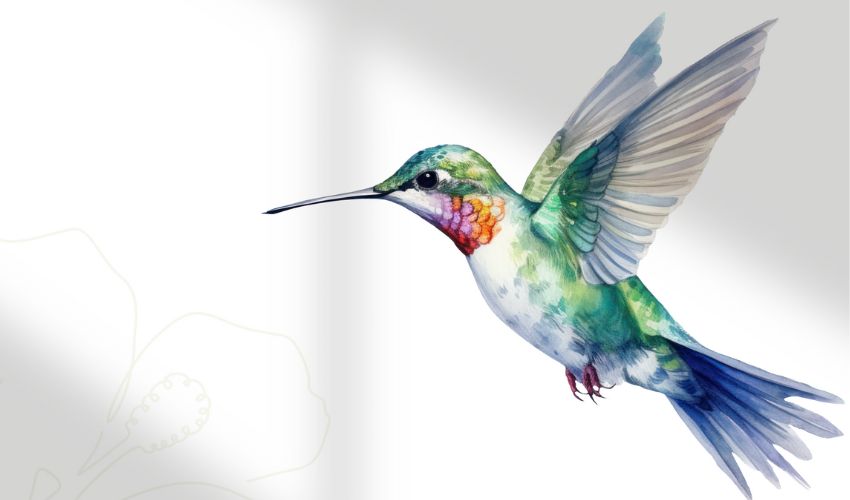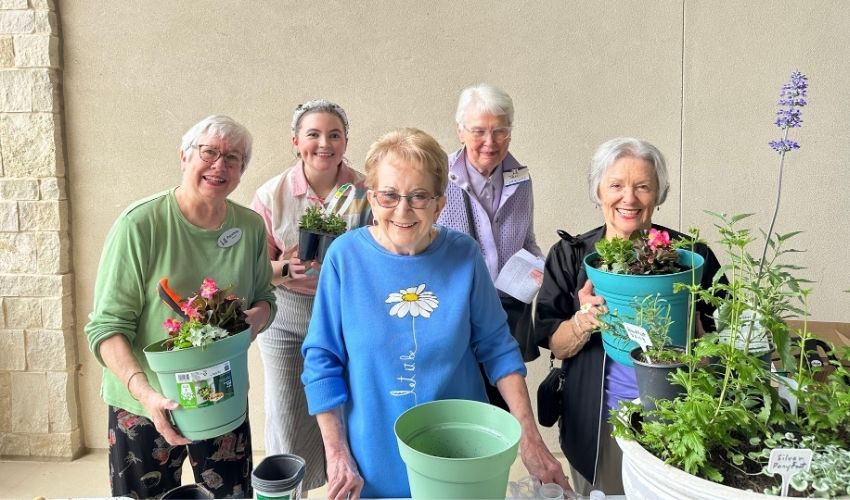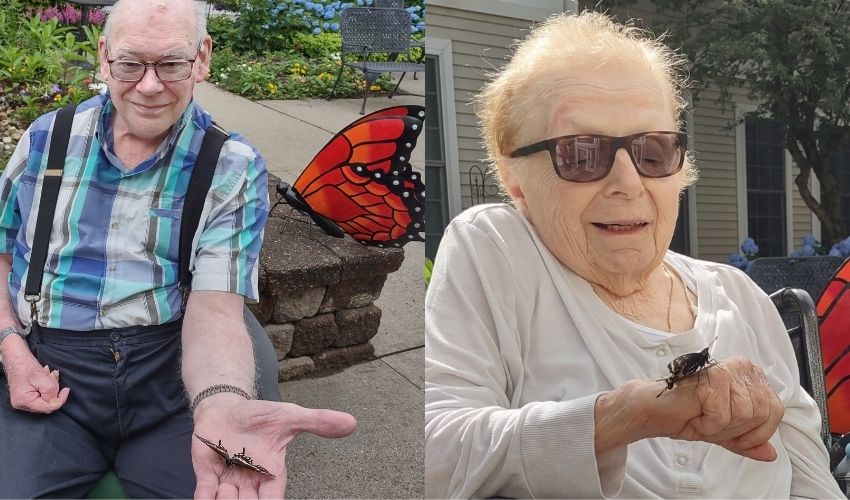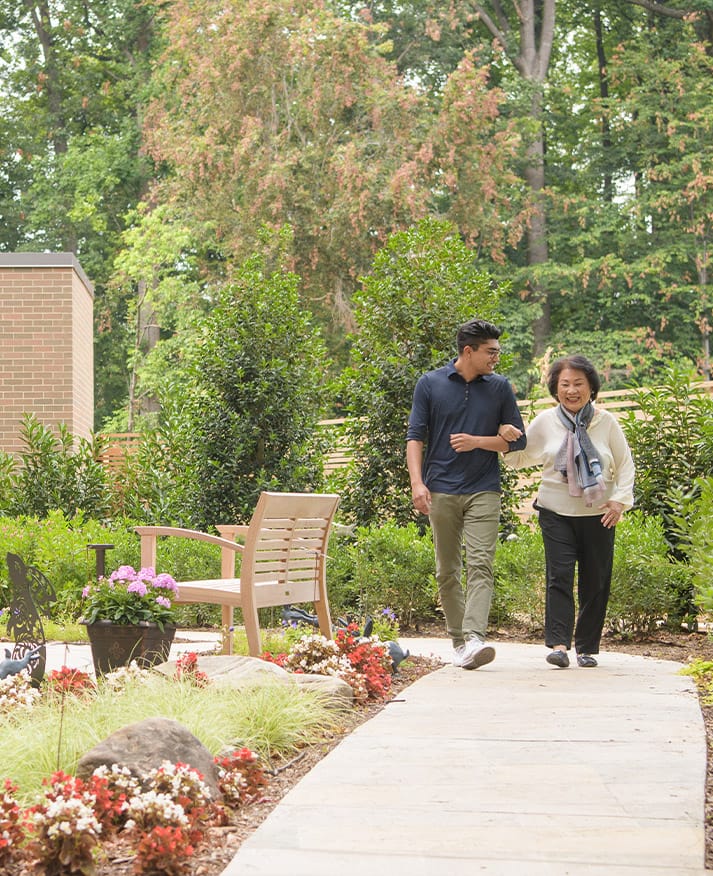A Garden Within Reach: Nature’s Joy in Small Spaces

The iridescent green of a hummingbird’s cheeks flashes you a grin from outside your window, where all you needed was a hammer and a nail to blur the line between your indoor home and the outdoor one we all share. Hanging a hummingbird feeder is just one way to commune with nature from the coziness of your home, and you can attract these cheerful critters in every state of the continental U.S. Hang your feeder next to your window and fill it with a ratio of 1:4 organic granulated sugar and plain water, then sit back and wait for company to arrive.
The American Psychological Association published an article in 2020 detailing some of the many benefits of spending time in nature, including cognitive improvement, lower stress levels, more numerous and higher quality social connections, and a happier mood. Many residents of senior living communities reside in apartments and may feel that their options for interacting with nature are limited, but there are so many ways to connect with the natural world without needing to move to a cabin in the middle of the woods. The hummingbird feeder is just a start.
Many Watermark residents are fortunate enough to have access to gardens where they can choose and plant species that attract pollinators or produce fresh food. Residents at The Hacienda at Georgetown™ in Texas planted herbs, strawberries, kale, and cabbage for their fall garden, but you don’t need a whole garden, or even to leave your apartment, to coax some plant life into your world. A kitchen windowsill is an excellent place for a few small potted plants, especially if it faces south, where herbs like thyme, lemon balm, mint, and sage can flourish.
Snip off a few sprigs to liven up your cooking, flavor a beverage, or pinch off some leaves and enjoy the aroma. You can purchase these plants as small starts and transplant them into pots, or you can even grow them as seeds and enjoy the anticipation of checking on them every single day (or multiple times a day!) and waiting for that first green shoot to appear.
Other potted plants that do well indoors are pothos and monstera, which generally require low light and low water, making them well-suited for north- or east-facing windows. Xanadu, a plant that thrives in afternoon sunlight (think a west-facing window), has large leaves that stretch upward and can create a jungle canopy effect. There are even plants that require less maintenance than potted ones, and no soil at all. Air plants, which are becoming widely available in nurseries and garden centers, are often arranged in appealing terrarium-style glass containers that you can simply set on a tabletop or hang from a hook. Their roots generally grow in rocks instead of soil, and they can require as little as a light misting with a spray bottle now and then.

If you have a window that can fit a window box, you can plant species that attract all kinds of helpful pollinators as well as provide a colorful view. One out of every three bites of food exists because of insects that pollinate our food supply, and America’s pollinators are in devastating decline due to pesticide and herbicide use as well as commercial cross-country shipping of hives. Encouraging native pollinators to visit your home is one way to support their struggling population and enjoy the symbiotic relationship between bees and flowers.
A common misconception is that the honeybee is the best or most important pollinator, but according to Crown Bees, a company that helps people across the country raise native mason bees, a honeybee only pollinates five percent of the plants they visit.
Mason bees are solitary creatures that are usually active in early spring or when temperatures are relatively cool, and in contrast to honeybees, they have a much higher pollination rate — up to 95 percent of flowers they visit. You can attract the peaceful mason bees and other native wild bees to your window by planting native flowers and even by setting up a “bee hotel,” which is a small house for bees shaped in a way that mimics their natural top choice for a bee home.

In addition to attracting hummingbirds and pollinators and enjoying the scents and colors of herbs and flowers, you can also hang bird feeders that welcome songbirds. Bird feeders come in so many shapes, sizes, and configurations that you could make a whole day of shopping for a feeder that will be perfect for your particular patio, window, porch, or front yard.
Depending on what area of the country you live in, you may have some competition for birdseed, so be sure to scout out feeders that deter squirrels, mice, and other rodents.
Thistle is a favorite among goldfinches, while cardinals and chickadees enjoy sunflower seeds. Blue jays prefer feeders that have a little ledge for them to perch on, while other birds will hang right off the feeder itself, and others enjoy a tray. You can get a couple of different feeders and see who comes to visit you, but keep in mind that once they find out where the good stuff is, they’ll be inviting their friends!
Moving to or living in a retirement community offers so many options to stay or become involved with nature that the greatest obstacle is probably just figuring out which critters you want to attract and how many flowers and feeders you can fit in your space. The possibilities are endless, and many people who hang bird feeders and have flower gardens report that they truly enjoy seeing these creatures and even come to recognize individual critters. Create a pollinator-friendly environment just outside your window, or enjoy the lush vines of an indoor garden, and know that wherever you are, nature is just an invitation away.



